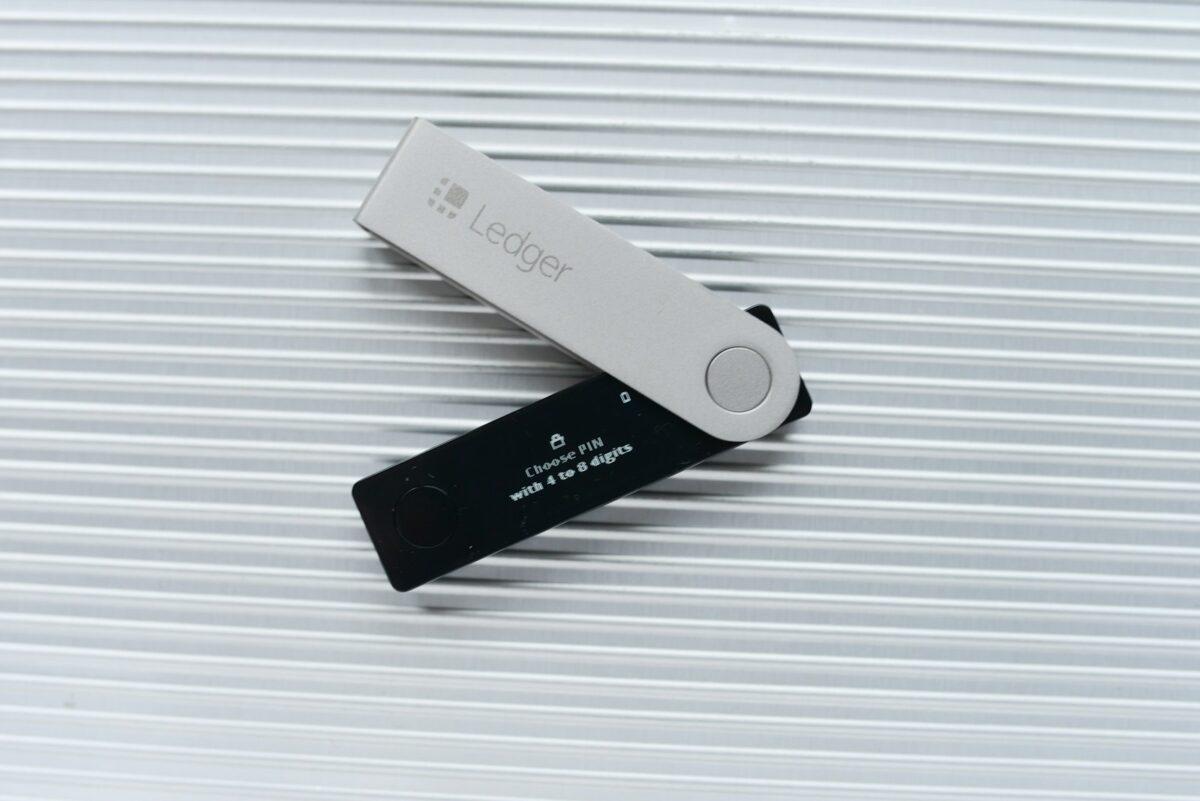
Understanding crypto wallet addresses

Always verify the exact string before you copy any public codes used for sending or receiving funds. These identifiers function as unique destinations within distributed ledger systems, ensuring assets reach the correct participant. The format of these sequences varies depending on the protocol but typically consists of alphanumeric characters designed to prevent errors during manual input.
Private cryptographic keys control access to funds and must never be shared. Instead, share only the receiving codes, which act as publicly visible references allowing others to transfer tokens or digital assets into your account. Understanding how these addresses relate to underlying key pairs clarifies why possession of a private key grants full control over associated balances.
Standardizing address formats enhances compatibility across platforms and wallets, enabling seamless transfers between different service providers. Testing small amounts before large transactions is advisable, as even minor typos in copied public strings can result in irreversible loss. Exploring common encoding schemes such as Base58 or Bech32 reveals how checksum mechanisms protect against accidental mistakes.
Understanding Crypto Wallet Addresses
To effectively manage cryptocurrency transactions, it is necessary to comprehend the structure and function of public codes used for both sending and receiving tokens. These sequences act as identifiers within a blockchain network, allowing one participant to transfer assets securely to another. Each code corresponds to a unique cryptographic key pair, where the public element serves as the visible endpoint for incoming transfers, while the private counterpart remains confidential and enables control over the funds.
These alphanumeric strings differ depending on the blockchain protocol–Bitcoin addresses often start with “1”, “3”, or “bc1”, whereas Ethereum uses hexadecimal formats beginning with “0x”. Such variations reflect differing encoding standards and underlying cryptographic algorithms. Wallet applications generate these addresses through deterministic processes from master keys, enabling users to derive multiple receiving points without exposing private keys.
The Role of Public Keys and Address Generation
Public keys originate from private keys through elliptic curve multiplication, a one-way function ensuring that knowledge of the public component does not compromise security. The wallet’s address is typically a hashed version of this public key, compressed into a shorter format suitable for transmission and display. This hash adds an additional layer of protection against direct extraction of sensitive information.
For example, Bitcoin employs Base58Check encoding combined with SHA-256 and RIPEMD-160 hashes to produce addresses resistant to typographical errors during manual entry. Similarly, Ethereum utilizes Keccak-256 hashing but displays addresses in hexadecimal form. Understanding these technical transformations helps clarify why addresses appear as seemingly random strings yet hold precise cryptographic significance.
- Sending operations: require specifying the recipient’s public code accurately to ensure proper asset delivery;
- Receiving functions: rely on sharing your own address safely, often via QR codes or copy-paste mechanisms;
- Security measures: include verifying address authenticity before confirming transactions due to irreversible blockchain protocols.
QR codes provide a practical interface by encoding these lengthy strings into scannable images, minimizing human error during data entry. Wallet software commonly offers QR generation along with easy copy features for seamless integration between devices or platforms. Testing such methods experimentally reveals that scanning accuracy significantly reduces failed transactions compared to manual typing in complex environments.
Analyzing case studies involving transaction failures highlights how mistyped or corrupted destination codes result in permanent loss of funds. Therefore, users must adopt meticulous verification steps such as checksum validation embedded within most address formats. This approach demonstrates how cryptographic design intertwines usability with robust security frameworks fundamental to decentralized asset management.
How To Read Wallet Addresses
Begin by recognizing that a wallet identifier consists of a sequence of alphanumeric characters representing a public key or its hashed form. These identifiers are designed to be copied and shared for sending or receiving tokens without exposing private keys. Each format corresponds to specific blockchain protocols and influences how transactions are processed.
Wallet codes vary depending on the underlying cryptographic algorithm and network standard. For example, Bitcoin addresses typically start with ‘1’, ‘3’, or ‘bc1’, reflecting legacy (P2PKH), script (P2SH), or SegWit formats, respectively. Ethereum uses hexadecimal strings prefixed with ‘0x’, encoding the recipient’s public key hash directly. Understanding these distinctions is critical for accurate transaction targeting.
Decoding Public Key Formats
The public identifier often results from hashing the public key through SHA-256 followed by RIPEMD-160 algorithms, then encoded in Base58Check or Bech32 formats to improve readability and error detection. This transformation ensures shorter, user-friendly strings while embedding checksum data to prevent mistyped entries during manual input.
- Base58Check: Used in Bitcoin legacy addresses; excludes visually ambiguous characters like 0 (zero) and O (capital o).
- Bech32: A newer format enabling SegWit transactions; case-insensitive with enhanced error correction.
When copying these codes for sending assets, verifying the address prefix can help identify compatibility with intended transaction types or wallets, minimizing risks of failed transfers.
Practical Examination of Address Structure
A typical example: an Ethereum address such as 0x742d35Cc6634C0532925a3b844Bc454e4438f44e. Here, the initial ‘0x’ indicates hexadecimal notation. The subsequent 40 characters represent a hashed version of the sender’s public key. This non-checksummed format requires external validation tools to confirm correctness before initiating transfers.
*Checksum validation in Ethereum addresses can be implemented via mixed-case encoding according to EIP-55 standards but is not mandatory.
Error Detection and Security Practices
The inclusion of checksums within address formats serves as a guardrail against typographical errors during manual copying or input. Sending funds to an incorrectly typed code often results in irreversible loss due to blockchain immutability. Utilizing QR codes generated by wallets reduces human error when sharing receiving information.
- Always verify prefixes: Confirm that the address matches expected network standards.
- Avoid reusing addresses across multiple chains: Identical-looking formats may exist on separate networks but differ in function.
- If available, utilize hardware wallets: They display destination addresses on secure screens before approving outgoing transactions.
Differentiating Between Public Keys and Addresses
An important distinction exists between raw public keys and their corresponding address representations. Public keys are longer hexadecimal strings used internally for cryptographic verification. Addresses are compressed derivatives designed for easier communication and reduced storage requirements within transaction metadata.
This compression process involves transforming the elliptic curve public key into shorter hashes plus additional formatting layers. Exploring cryptographic libraries reveals how functions like RIPEMD-160 transform full keys into usable endpoints for sending assets safely without revealing sensitive credentials necessary for signing operations.
Troubleshooting Common Issues When Copying Codes
Mistakes frequently arise due to invisible characters introduced when copying wallet identifiers from digital platforms–such as trailing spaces or hidden line breaks–which invalidate transaction attempts. Employing clipboard monitoring tools or dedicated wallet applications mitigates these problems by sanitizing inputs automatically before broadcast into peer-to-peer networks.
If encountering persistent failures during sending operations, cross-reference the copied string using block explorers specific to the blockchain involved. These interfaces provide detailed insights into valid account structures and historical activity linked to each unique identifier. Such iterative verification strengthens trustworthiness in asset transfers while fostering deeper comprehension of decentralized ledger mechanics.
Generating A Secure Wallet Address
To ensure secure transaction handling, generating a receiving identifier must begin with the creation of a robust public key in the correct format. The format, typically Base58Check or Bech32 for Bitcoin-derived chains, encodes the public key hash and includes checksum data to detect errors during manual entry or copying. When generating such an identifier, it is advisable to use hardware solutions or reputable software tools that implement cryptographic randomness sources to prevent predictable outputs vulnerable to attacks.
After generation, the new receiving tag can be shared through multiple methods: direct text copy-paste, encoded QR codes for smartphone scanning, or integration into payment requests within decentralized applications. Each method introduces different risks; for example, copying addresses can lead to clipboard hijacking malware altering characters. Scanning QR codes minimizes manual input errors but requires secure camera access permissions and trusted code generators. Using standardized formats ensures compatibility across sending platforms and reduces failed transfers.
Technical Aspects of Address Generation and Sharing
The process involves deriving a public string from a private cryptographic seed using elliptic curve multiplication algorithms (e.g., secp256k1). This string represents the public endpoint to receive funds securely without exposing private keys. Different blockchains apply distinct encoding rules–Ethereum uses hexadecimal format prefixed by “0x,” while Bitcoin employs more complex encoded strings sensitive to network type (mainnet vs testnet). Proper understanding of these formats allows better verification before transmitting values.
Verification steps include checksum validation embedded within the address string and cross-referencing with trusted nodes or explorers. Users should avoid reusing addresses when possible since deterministic derivation patterns may reveal transaction linkages compromising privacy. Instead, hierarchical deterministic (HD) protocols generate fresh identifiers on demand from a single master seed while maintaining user control. Employing these practices alongside secure transfer tools like encrypted messaging apps or cold storage devices enhances overall security during sending and receiving operations.
Checking Address Validity Online
Verifying the legitimacy of a receiving endpoint before sending any funds is critical to prevent irreversible mistakes or losses. Online validation tools analyze the format and checksum of the entered string, ensuring it complies with the expected encoding standards for public keys or account identifiers. This preliminary check acts as a safeguard against typographical errors or maliciously altered codes that could redirect assets outside the intended destination.
Such verification processes typically involve parsing the input to confirm adherence to network-specific protocols–whether it’s Base58Check for Bitcoin-derived formats or Bech32 for SegWit addresses. These algorithms verify that the address includes valid version bytes and proper checksums, which are integral components encoded alongside public key hashes. Consequently, this step filters out strings that might superficially resemble valid endpoints but fail cryptographic integrity tests.
Technical Mechanisms Behind Online Validation
Validation platforms decode and re-encode the given sequence to detect inconsistencies in its structure. For instance, if a user copies an address via QR code scanning or manual entry from a paper wallet, hidden characters or spacing issues can corrupt the string’s integrity. The tool’s parser strips such anomalies and applies checksum verification–a cyclic redundancy check designed to catch accidental data corruption within keys.
This approach extends beyond simple syntax checks; it actively validates whether a particular format corresponds to a recognized blockchain standard. Different chains utilize distinct alphabets and length requirements for their endpoints. An Ethereum-style hexadecimal format with 42 characters starting with “0x” contrasts sharply with Ripple’s base58 addresses that include embedded versioning and checksum bytes. Effective online validators incorporate these chain-specific rules into their logic, enabling multi-protocol compatibility.
Experimentation shows that certain wallets generate addresses containing capital letters mixed with lower-case ones, while others strictly enforce lowercase outputs for better human readability and error reduction. Testing an unknown address on multiple validators reveals discrepancies caused by formatting irregularities or unsupported networks. Such findings guide users toward safer handling practices when transferring tokens across diverse ecosystems.
Practical recommendations include always copying endpoint strings directly from trusted sources using clipboard functions rather than manual transcription, as human errors often introduce subtle faults undetectable without automated parsing tools. Additionally, scanning QR codes provided by hardware devices or printed cold storage solutions minimizes exposure to malware-driven tampering attempts during digital transmission of keys.
Conclusion on Sending Funds to Digital Repositories
Always verify the public keys or receiving codes before initiating any transfer. Copying these alphanumeric sequences manually is prone to error; utilizing QR scanning technology minimizes mistakes and expedites transactions by directly encoding the destination string. The integrity of sending operations fundamentally depends on precise identification of these unique identifiers.
Private cryptographic keys, which authorize outgoing transfers, must remain confidential and secure. Exposure compromises control over assets despite correct public endpoints. Combining reliable key management with accurate reading of destination markers ensures safe, irreversible fund movements within decentralized systems.
- Public codes serve as the sole means for others to send value; their format often encodes network information and checksum for validation.
- The increasing adoption of QR standards simplifies manual input errors while enhancing user experience across hardware devices.
- Emerging protocols may integrate multisignature schemes and time-locked conditions, adding layers beyond simple sending-receiving models.
Future developments will likely emphasize interoperability between distinct ledgers via address mapping services, enabling seamless cross-network transfers without sacrificing security. Experimenting with evolving encoding methods–such as bech32 or new base encodings–can reveal efficiency gains and robustness improvements in fund transmission workflows.
For researchers and practitioners alike, probing the nuanced relationship between human-readable identifiers and machine-verifiable keys opens pathways to optimize transaction design. How might improved visual code representations reduce phishing risks? Could integrating biometric confirmations further harden private key usage during outbound transfers? These questions invite ongoing experimentation within cryptographic asset management frameworks.


